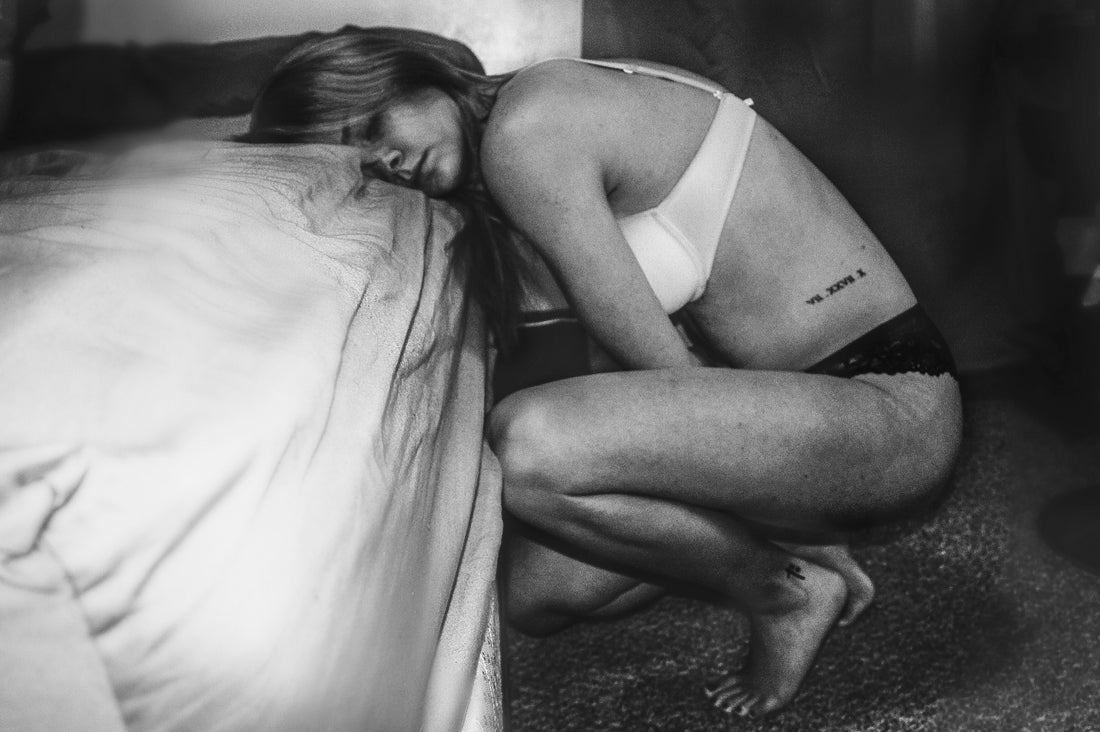
What is PMDD, and How Is It Different From PMS?
Share
Whether you’re a menstruator or not, you’ve certainly heard about PMS. But do you know about PMDD? This lesser-known cause of period discomfort can be very disruptive, so learn what PMDD stands for, what is PMD vs. PMS, how to identify PMDD symptoms, and what period relief products exist to help.
What Does PMDD Stand For?
PMDD stands for premenstrual dysphoric disorder and can be thought of as a more severe form of PMS that significantly impacts the quality of life. Although the exact prevalence of PMDD is not known, studies estimate that somewhere between 3% and 9% of women of reproductive age suffer from premenstrual dysphoric disorder (Halbreich et al, 2003). Although many PMDD symptoms overlap with those of PMS, there are some key differences.
How is Premenstrual Dysphoric Disorder Different Than PMS?
While most menstruators will experience PMS symptoms, PMDD symptoms are more serious and disruptive to your routine and relationships and affect a smaller proportion of women. When it comes to PMDD vs. PMS, premenstrual dysphoric disorder causes more severe psychological and emotional symptoms.
There are established criteria in the Diagnostic and Statistical Manual of Mental Disorders 5th edition (DSM-V) for PMDD, meaning it is a recognized mental health condition. In contrast, PMS is not classified as a mental illness.
PMDD Symptoms
Like PMS, PMDD symptoms begin sometime in the two weeks preceding menstruation and subside within a few days of the period starting. When considering PMDD vs. PMS, PMDD symptoms are far more intense, particularly the emotional and behavioural ones.
The physical premenstrual symptoms of both PMDD and PMS include bloating, tiredness, breast tenderness, cramps, joint pain, muscle pain, and headaches. Both conditions can also cause changes in appetite, such as food cravings.
The severity of emotional or psychological PMDD symptoms is what differentiates it from PMS. Premenstrual dysphoric disorder may manifest as feelings of intense sadness or hopelessness, sometimes even going as far as thoughts of suicide. PMDD may also cause mood swings, trouble sleeping, and anxiety, including panic attacks.
To meet the DSMV-V criteria for PMDD diagnosis, a woman should experience a minimum of five emotional and physical symptoms in at least two consecutive menstrual cycles that interfere with regular activities.
Treatment for PMDD
As with many conditions that exclusively plague menstruators, the cause of PMDD is not well understood. Given its severe impacts on mood, changing hormone levels during the menstrual cycle and their impact on brain chemicals called neurotransmitters is thought to play an important role.
Premenstrual dysphoric disorder is considered a mental illness, for which a doctor may prescribe antidepressants that regulate the serotonin levels in the brain, which help improve mood.
Given the increased impacts on mood when it comes to PMDD vs. PMS, menstruators with premenstrual dysphoric disorder may find it helpful to practice stress management techniques. Breathing and relaxation exercises can help manage anxiety and improve the quality of sleep.
For women who are not trying to get pregnant, oral contraceptives can help regulate hormones that are thought to contribute to PMDD symptoms. For physical premenstrual symptoms like cramps, headaches, and muscle pain, doctors may recommend over-the-counter pain relievers. Many menstruators wonder how to get relief from period pain and turn to pain medicine for cramps, including ibuprofen or naproxen. But there is a new and exciting option that involves using CBD for period cramps…
AIMA is Bringing OVY to Help You With All Your Menstrual Issues
Women in pain have been neglected for far too long due to the gender pain gap, which has resulted in a poor understanding and awareness of conditions like premenstrual dysphoric disorder, PMS, and other causes of extremely painful periods and discomfort in the lower abdomen.
AIMA is on a mission to shed light on the pain gap, common conditions affecting menstruators, and innovative solutions to provide support for period discomfort. If you’ve ever wondered, ‘does CBD help with period cramps?’, the answer is yes! We are excited to be launching a vaginal CBD suppository that provides an alternative to the typical medication for cramps.
By inserting a CBD suppository right into the reproductive tract, you get fast, localized relief for period discomfort. This is possible due to the presence of cannabinoid receptors which naturally exist there, allowing the CBD to bypass the liver and act directly to provide long-lasting relief. OVY has been clinically tested to confirm safety and efficacy and is coming soon!
Let’s work together to make the pain gap a thing of the past so that all menstruators are empowered to relieve period pain and other issues such as PMDD!
